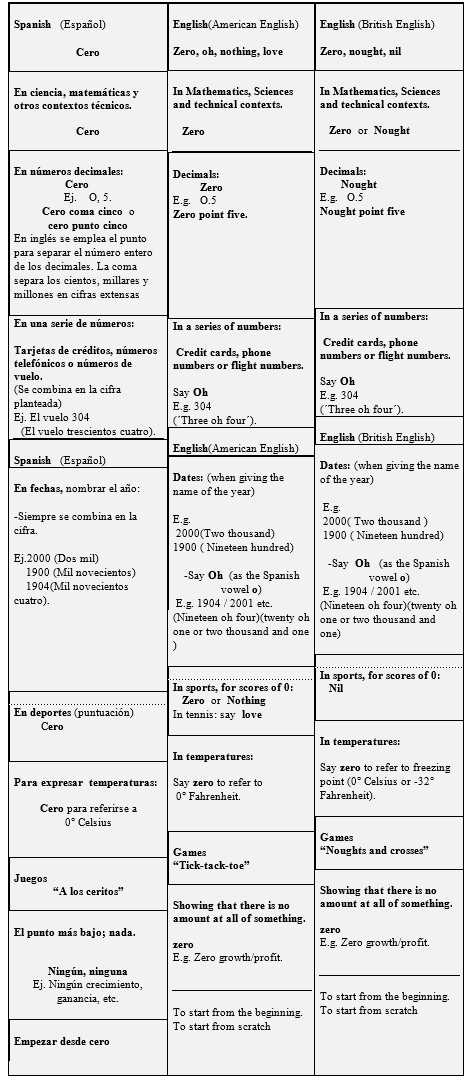- Home
- Various Articles - Teaching Secondary
- A Useful Comparative Approach for Teaching English in My Class: A Tertium, Comparationis (TC)
A Useful Comparative Approach for Teaching English in My Class: A Tertium, Comparationis (TC)
María Eugenia de Lara MSc taught English at secondary school level for seven years and at “Federico Engels” Language School for fifteen years; at present she is a teacher at Matanzas University Language Centre. She is interested in Linguistics and has written about translation topics, two booklets on fragments from José Martí’s Work for student’s reading comprehension and she has also written a glossary for customs officers’ activity. Email: maria.delara@umcc.cu
Mario Gómez taught English at secondary and high school levels, he worked as a teacher at the Secondary Teachers Training Courses and at “Federico Engels” Language School; he was also an English Provincial Supervisor in Matanzas. At present he is a retired teacher who is interested in the current use of English Language. He is always pleased to give advice and help other teachers.
Introduction
The influence of modern linguistic science on the teaching of foreign languages is really valuable. One of its most important contributions has been the provision of reliable methods of descriptive analysis, on which comparative studies may be based. The mechanism of transfer may affect any aspect of the languages - word order, the grammatical forms, pronunciation, intonation, the choice of words. The authors of this work have taken advantage of resemblances and devoted the valuable teaching time thus saved to reinforcing the areas of greater conflicts, (“Ways of saying the number 0”, “Places and Transport”, “Spelling Rules, some differences”, etc.) In our classroom, at Matanzas University in Cuba, this approach has been really suitable for teaching English.
Development
The onomasiology approach involves the analysis of meanings in order to find the forms of expression. According to the functional semantic field, one of the classifications given by Bondarko is used to develop the present work. This work is centered upon qualitative - quantitative CSF (Classification Semantic Field). It is based on a tertium comparationis (tc), third element of comparison which was applied by Helbigen in 1981, this unity propitiates the objective confrontation because it constitutes an outside-in point of view to both language variants in contact (American and British English). The (tc) involves content levels that allow us value the equivalence (for instance: 0 to express temperature).
Bilateral or multilateral approaches are applied in order to compare from A to B, as well as, from B to A. This is possible because those phenomena are taken in accordance with the (t.c.), therefore they are equivalent. That is to say, they have similar content. It permits to show a relationship; for instance, some means of expression of a given content in one language with the corresponding in the other and vice versa.
Bilateral or multilateral approaches show differences and similarities and they are used to study two or more languages in their interrelation.
Conclusion
This work attempts to offer an example of the approach above mentioned: tc. 0 -The Arithmetic Sign without Numerical Value. (Means of expression) “Ways of saying the number 0”
It helps the students’ comprehension of different means of expression for this arithmetic sign used for both variants.
This comparative approach can be helpful to deal with contents, especially when there are many details or differences involved.

References
Bondarko, A.V. (1988) Los conceptos de categoría semántica, de campo semántico-funcional y situación categorial en el marco de las investigaciones comparativas. En: sb. Metody sopostavitelnogo izuchenia yazykov. Moscú: Nauka. (Traducción de Rodríguez Beltrán, R.)
Butterfield Jeremy. (2001). Collins Dictionary. Harper Collins Publishers. Second Edition, Great Britain.
Gleason, H.A. (1970). Introducción a la lingüística descriptiva. Madrid: Gredos.
Hambers. (2002). Study Dictionary. Chambers. Harrap Publisher. First Edition. Great Britain.
Hoey Michael. (2002). Macmillan English Dictionary for Advanced Learners. Bloomsbury Publishing Plc. United Kingdom.
James, C. (1981). Contrastive Analysis. Longman.
Leech, G. (1974). Semantics. London: Peguin Books.
Malmberg,B. (1971). Los nuevos caminos de la lingüística. La Habana. Ediciones, R. En. Lingüística histórica y Lingüística Comparada.
Nord, C. (2005) Text analysis in translation: theory, methodology and didactic application of a model for translation-oriented text analysis.
Smith Elliot L. (1986.) Contemporary Vocabulary. St. Martin’s Press Incorporated. Second Edition.
Smith Tony (2003). (Software edited by) CD ROM –Oxford University Press.
Slove Ed. (2011). Deluxe. Larousse Editorial, Paragon Software.
Wotjak, G. (1996). Problemas para la determinación del tertium comparationis (tc) que surgen al extender el objeto de la lingüística comparativa (LC) al habla. En: Núcleo 13/1996. Revista de la Escuela de Idiomas Modernos, UCV, Caracas.
Please check the Methodology and Language for Secondary course at Pilgrims website
A Useful Comparative Approach for Teaching English in My Class: A Tertium, Comparationis (TC)
Mario Gómez Pérez, Cuba;María Eugenia de Lara Navarro, Cuba